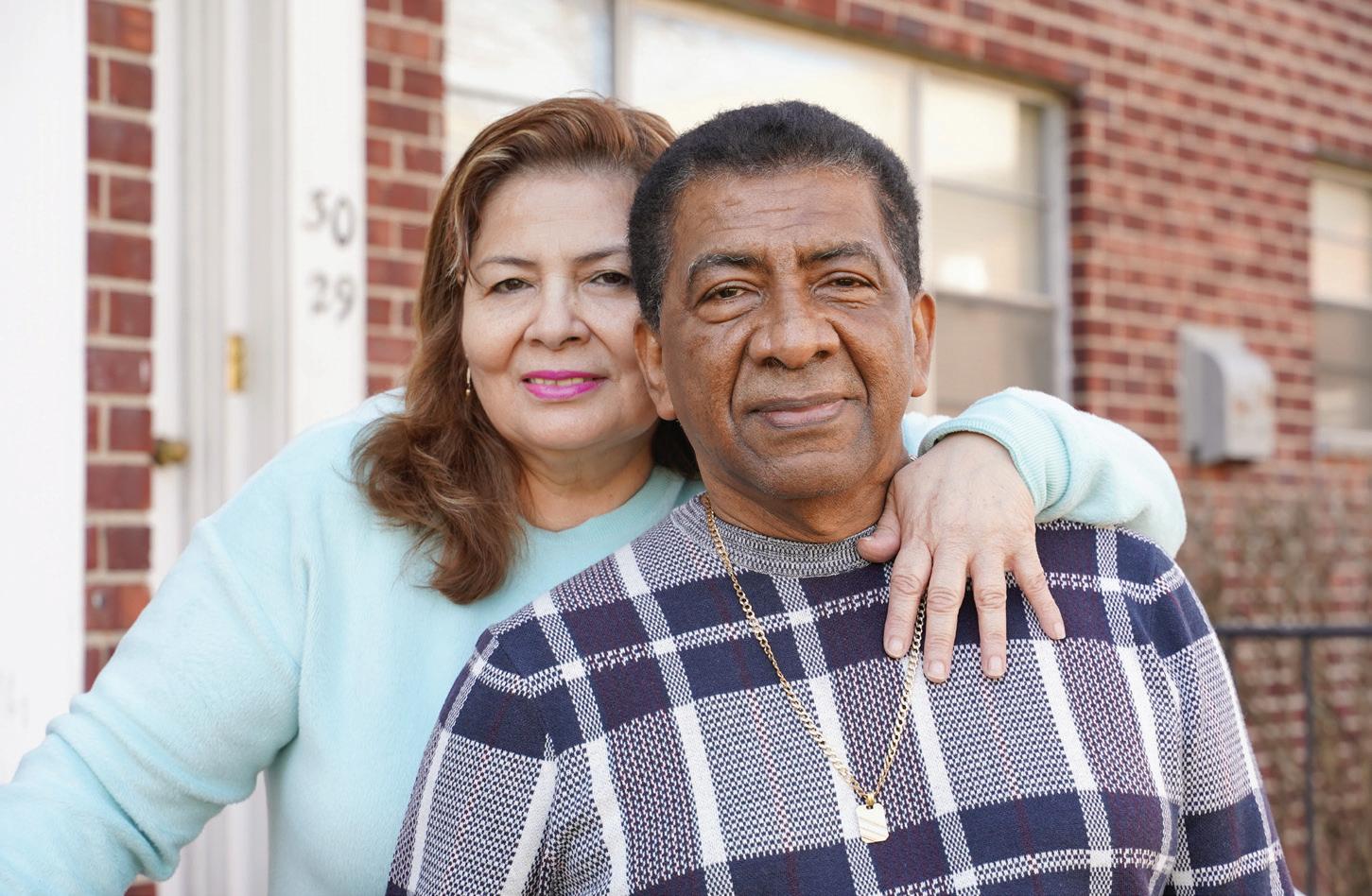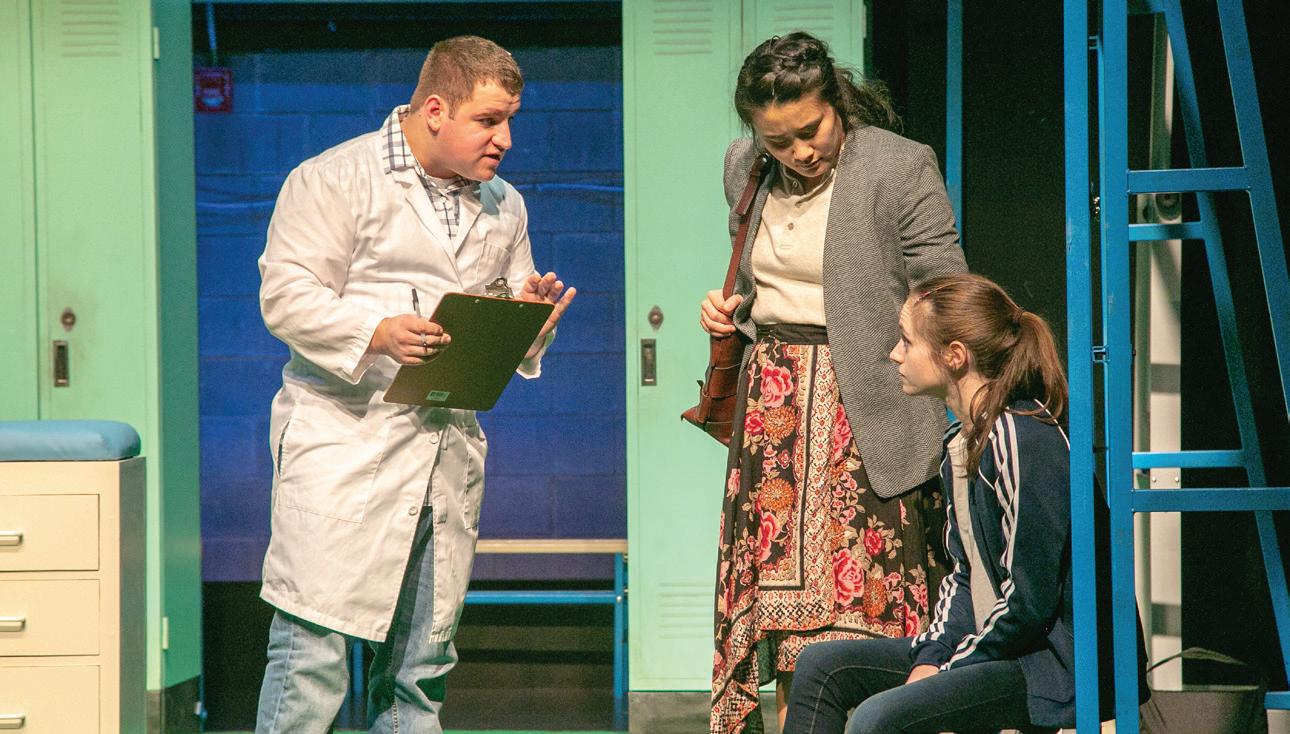
5 minute read
NEW LUNGS, NEW LIFE. A
NEW LUNGS, NEW LIFE

A DOUBLE LUNG TRANSPLANT AND PULMONARY REHABILITATION ALLOW A ROSELLE MAN TO REGAIN HIS INDEPENDENCE.
Going for walks, climbing stairs and exercising are activities Gustavo Larrahondo, 67, will never take for granted again.
Although a life-threatening lung disease once made it a daily strugg le to breathe, the Roselle resident can do all of those things now, thanks to a double lung transplant at Newark Beth Israel Medical Center (NBI) and pulmonary rehabilitation at Robert Wood Johnson University Hospital (RWJUH) Rahway.
A father of three and grandfather of three, Gustavo fi rst noticed something was wrong in 2018 when he started experiencing a persistent dry cough, shortness of breath and diffi culty lift ing heavy objects. In October of that year, a surgical biopsy of his lung tissue determined that he had idiopathic pulmonary fi brosis, a severe lung disease of unknown origin that results in scarring of the lungs. Both of his lungs were damaged.
Th e news came as a shock to Gustavo, who had never smoked and was otherwise in good health. “I never imagined I would have something like this,” he says.
Th ere is no known cure for idiopathic pulmonary fi brosis. “Th e average lifespan [aft er diagnosis] is usually fi ve years or less, which is why transplant becomes an option,” explains pulmonologist Th omas Kaleekal, MD, Medical Director of NBI’s Advanced Lung Diseases and Transplant Program, the only lung transplant program in New Jersey.
Gustavo was added to the national lung transplant waitlist. He required an oxygen tank to breathe and a walker to get around, oft en relying on the assistance of his wife, Ligia. “I needed help with little things like walking to the bathroom,” he says. “I lost my independence.”
REHAB FOR STRENGTH
No one knew when lungs would become available for transplant. In the meantime, Gustavo was advised to undergo pulmonary rehabilitation at RWJUH Rahway, a supervised program that combines exercise with education, breath retraining and nutritional counseling. Both NBI
Above, lung transplant patient Gustavo and his wife, Ligia. Gustavo’s determination and hard work at RWJUH Rahway’s Pulmonary Rehabilitation program gave him the strength to walk again.

ALL ABOUT PULMONARY REHABILITATION
WHAT IS PULMONARY
REHABILITATION? A program of supervised exercise, education, breath retraining, nutritional and medication counseling and support led by licensed respiratory therapists.
and RWJUH Rahway belong to the RWJBarnabas Health system.
“Pulmonary rehab can keep muscles strong and help patients rebound more quickly from surgery,” says Dr. Kaleekal. “Th is is important because people with serious lung diseases tend to do less physical activity, causing them to lose muscle mass. Also, the medications we use during transplant surgery, like steroids, can cause muscle weakness. Th e idea is that if you come into surgery strong, you’re likely to walk out in good shape.”
“When I fi rst met Gustavo he was tethered to a nasal cannula [oxygen device], but he was motivated. He did great in rehab and came a long way,” says Paula Erickson, RRT, registered respiratory therapist for RWJUH Rahway. “He was a perfect candidate for a transplant.”
During his rehab sessions, Gustavo worked out using treadmills, arm machines, cross trainers and ellipticals. He also learned how to retrain the way he breathes to help increase oxygen levels and avoid feeling out of breath.
In late May 2019, Gustavo received news that two donor lungs were available that were a match for his body. “Usually patients have about two hours to get to the hospital aft er they get the call,” says Dr. Kaleekal. “We have surgeons available 24/7 to do a lung transplant at THOMAS KALEEKAL, MD any time.”
Gustavo says it’s hard to put into words how he felt on the day of his transplant. “I felt a little bit of everything—excitement, but also nervousness because it was such a big surgery,” he recalls.
BACK TO EXERCISING
Although lung transplant patients typically spend less than three weeks in the hospital, Gustavo’s case required two months. After being released from the hospital, he spent two weeks in a rehab facility before returning home in August 2019. He then resumed pulmonary rehab at RWJUH Rahway to help rebuild endurance and make the most out of his new lungs.
“We don’t want patients to be couch potatoes, so we do the same types of exercises as before the transplant,” says Erickson. “Our goal is to get patients to eventually exercise on their own—either at home or at a gym.” Erickson also encourages patients to monitor the oxygen levels in their blood with a pulse oximeter, a small, inexpensive device that can be placed on the finger.
Today Gustavo is enjoying a new lease
WHO CAN BENEFIT FROM IT?
Pulmonary rehabilitation is recommended for people with chronic asthma, COPD, cystic fi brosis, pre- and post-lung transplant, interstitial lung disease, pulmonary fi brosis and many other lung and breathing conditions. Its goal is to improve strength and stamina and slow disease symptoms, as well as to reduce anxiety and build selfreliance and independence.
IS IT COVERED BY INSURANCE?
Pulmonary rehab is covered by most insurance, including Medicare and Medicaid.
on life with his new lungs. He no longer requires an oxygen tank to breathe, can go for walks and drive a car, and has even been cleared to travel on a plane. He says he feels grateful for the wonderful care he received from the doctors and staff at NBI and RWJUH Rahway.
“Everybody involved in the process was so good, and I’m very thankful for that,” he says. “I have so much more quality of life than before.”
FOR MORE INFORMATION
To learn more about lung transplants at Newark Beth Israel Medical Center, visit www.rwjbh.org/lungtransplant. The RWJUH Rahway Pulmonary Rehabilitation program is located in the Nicholas Quadrel Healthy Heart Center, 2nd floor, 865 Stone Street, Rahway. To learn more or to make an appointment, call 732.499.6208.










